The Power and Mystery of Fire

Any idea what you are looking at? Clearly it is something burning, but can anybody identify what it is? Here are some more photos of the burning item for you to identify:
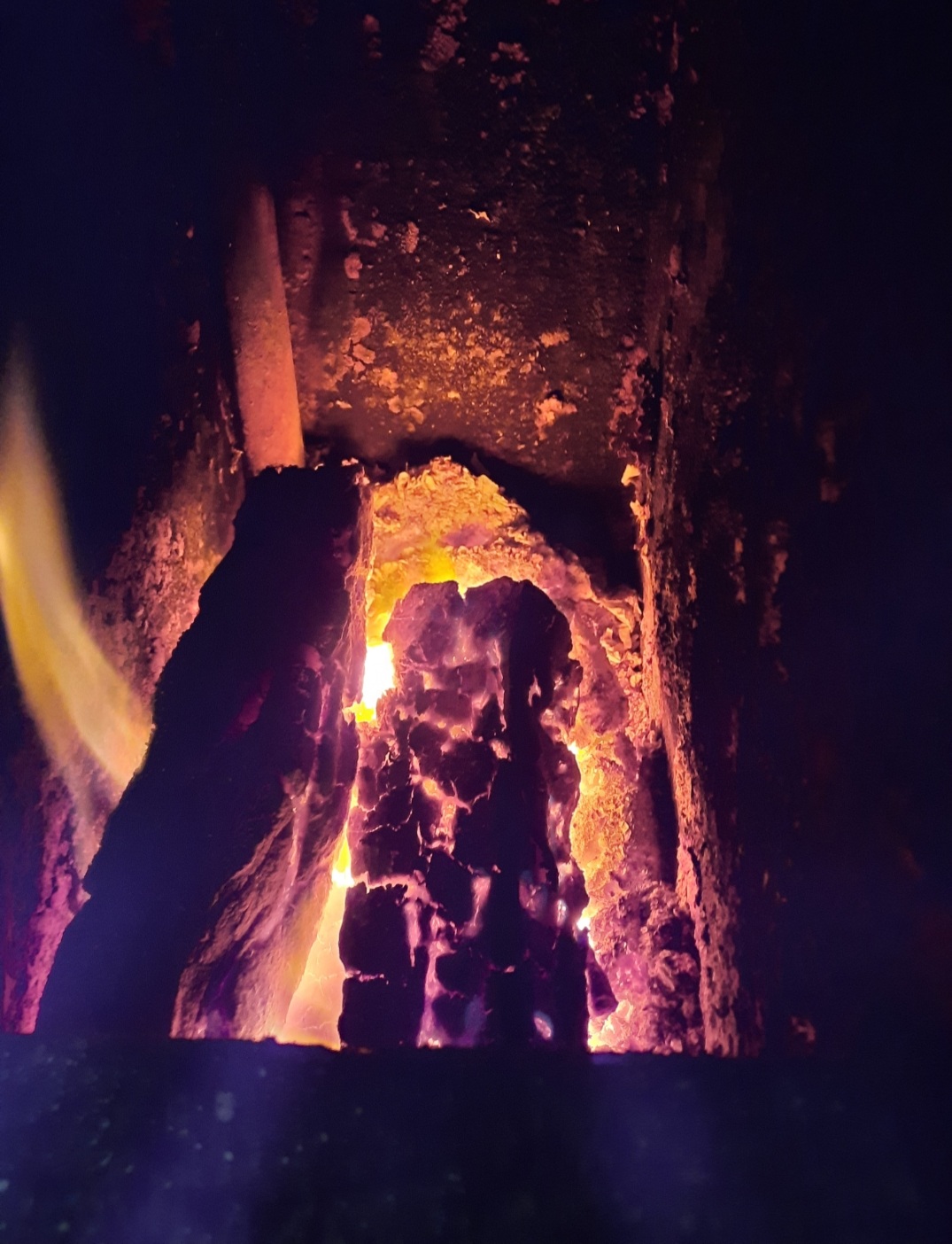

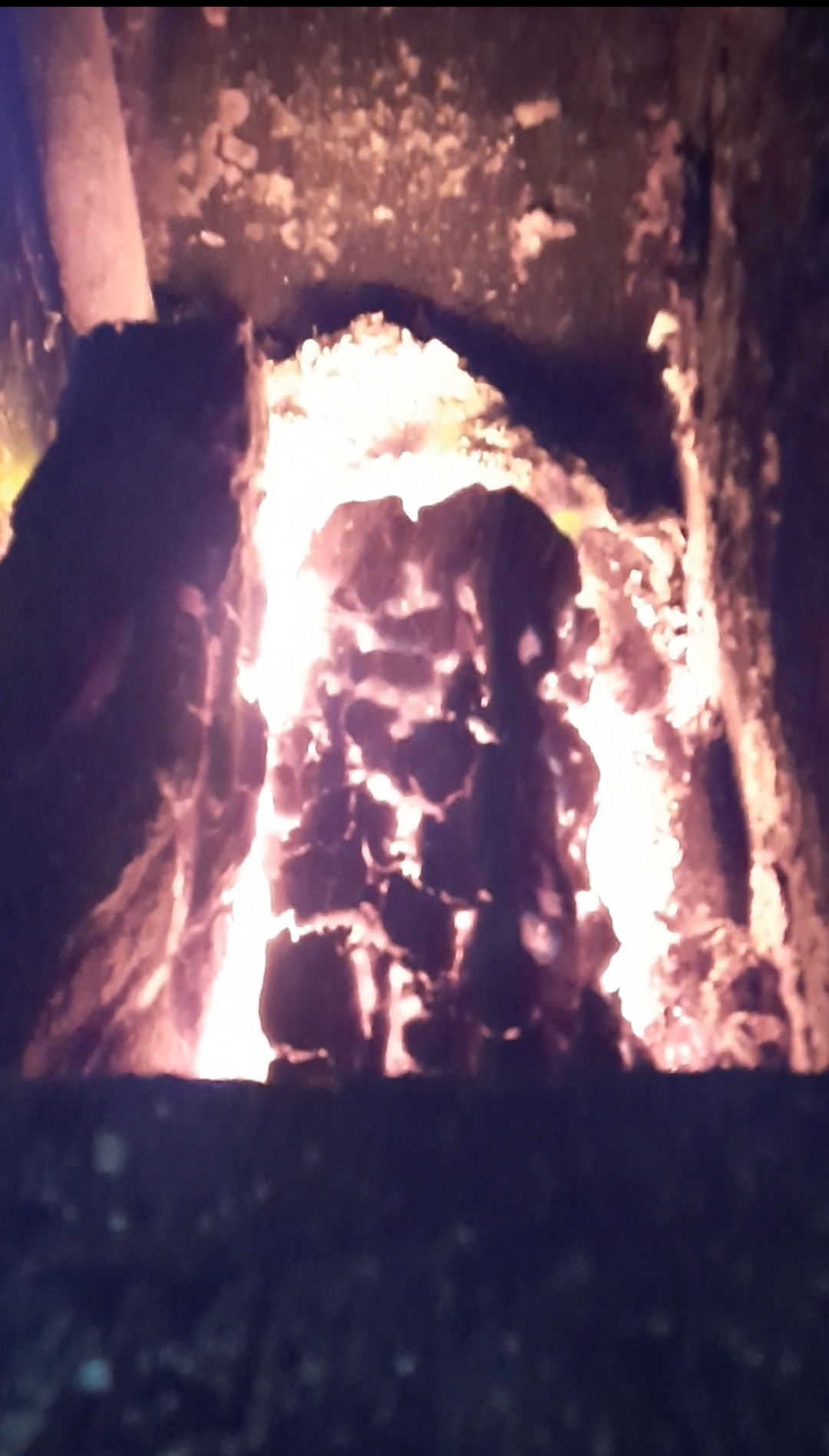
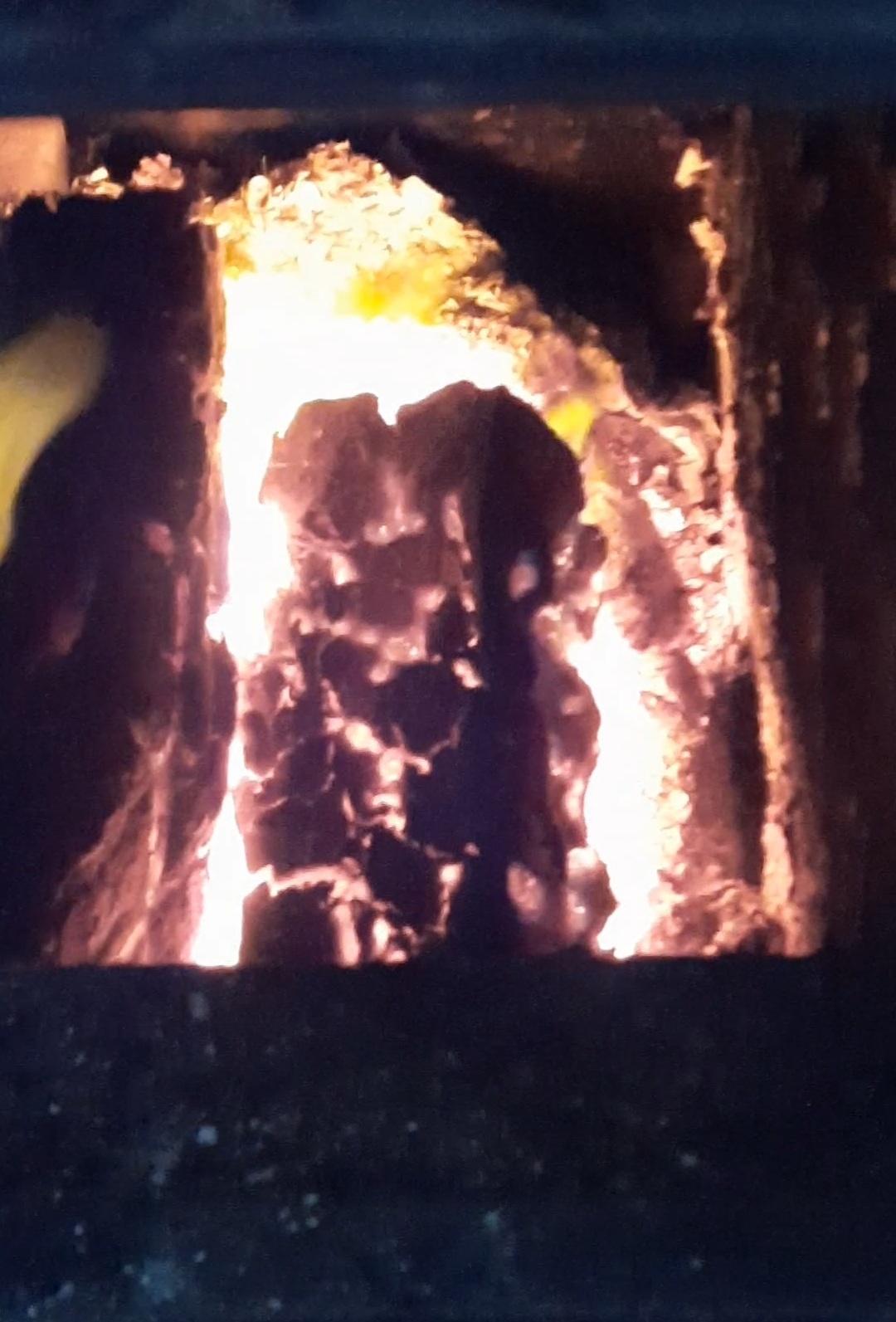

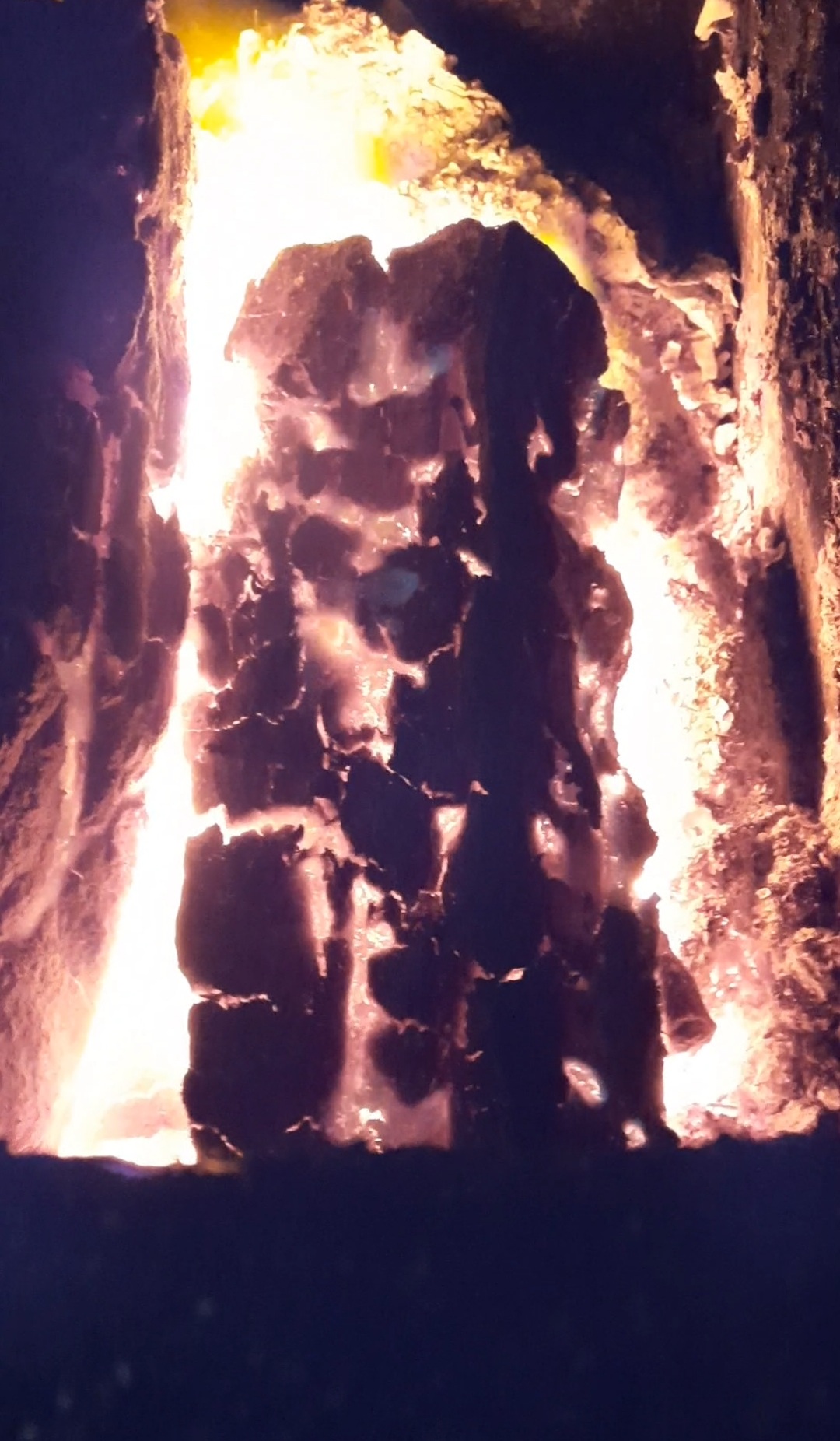
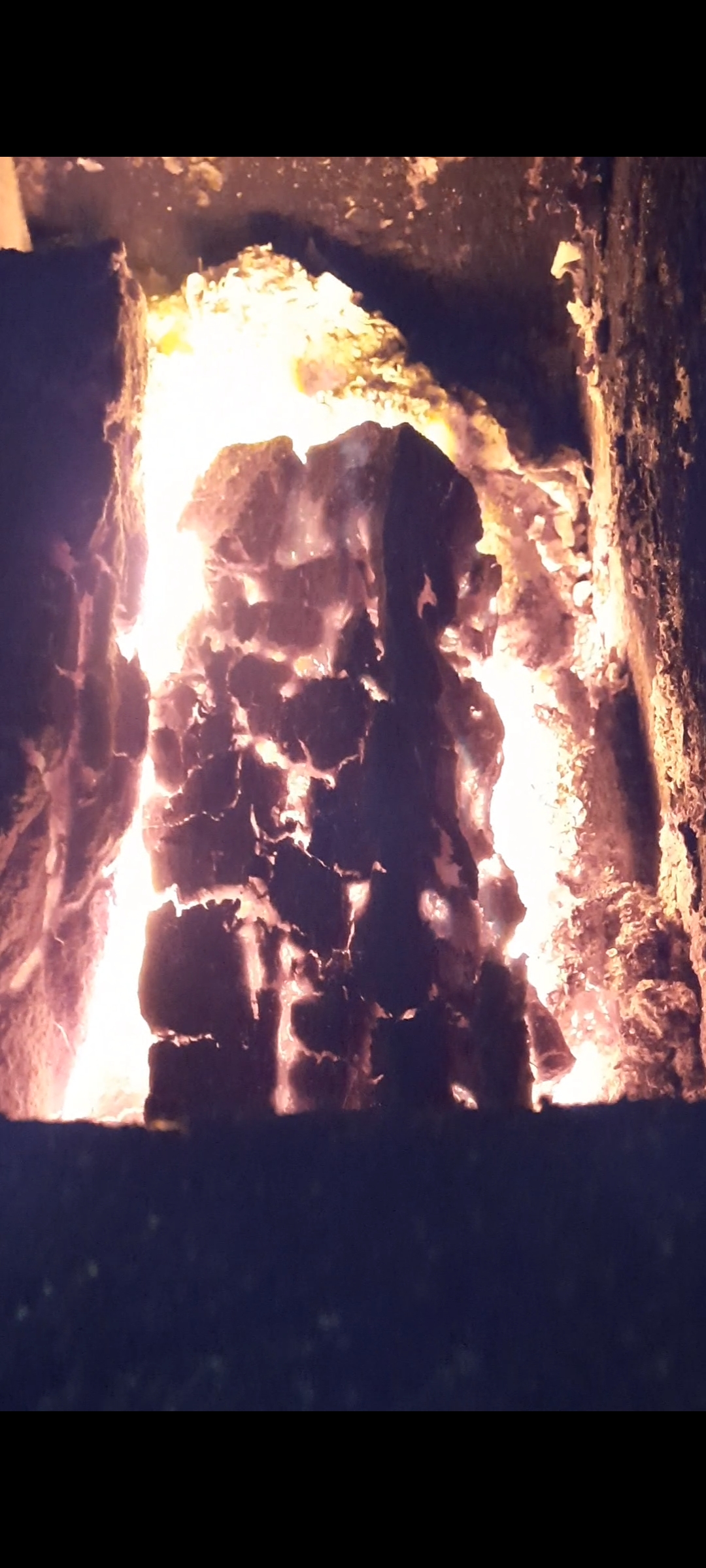
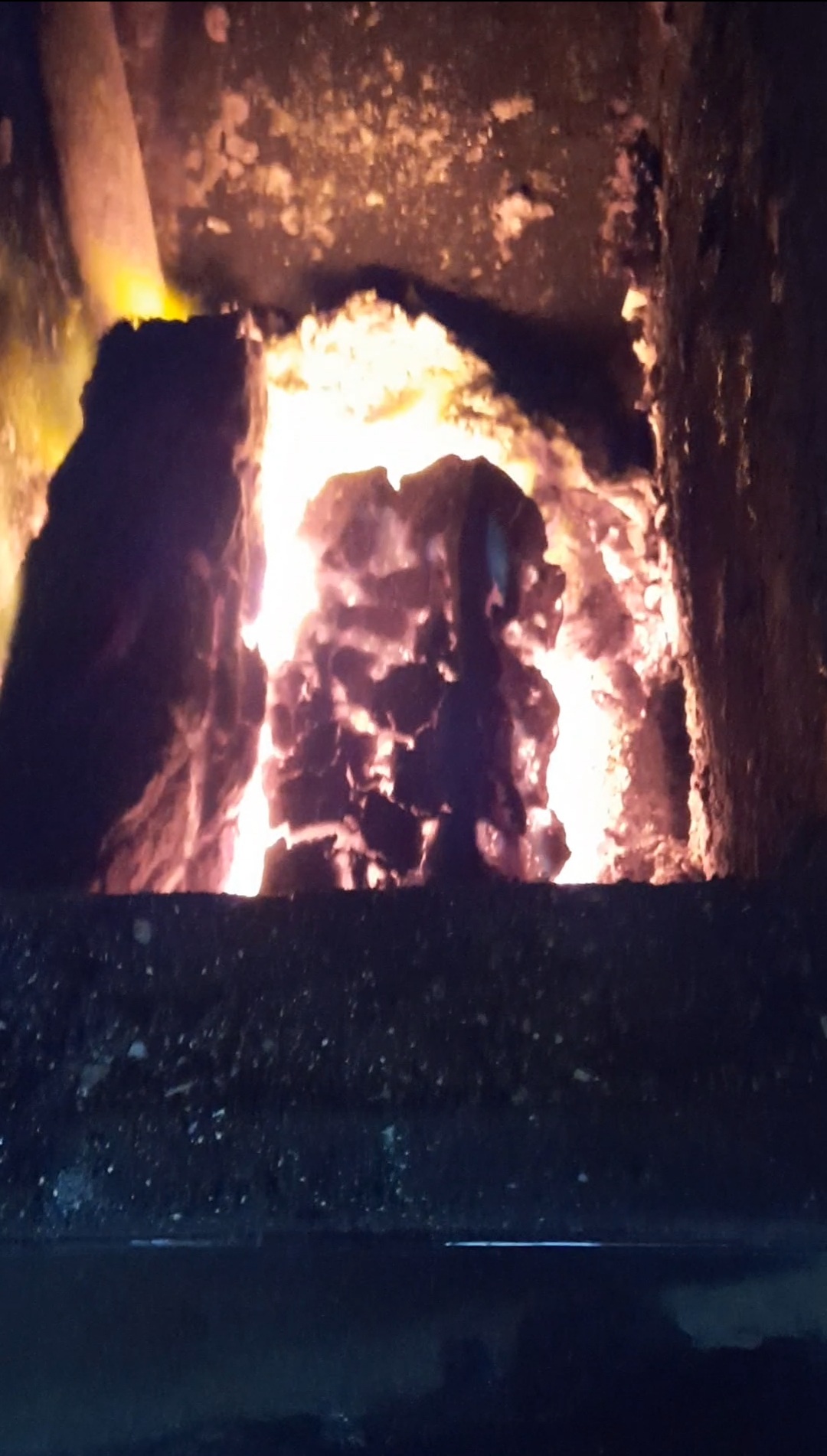
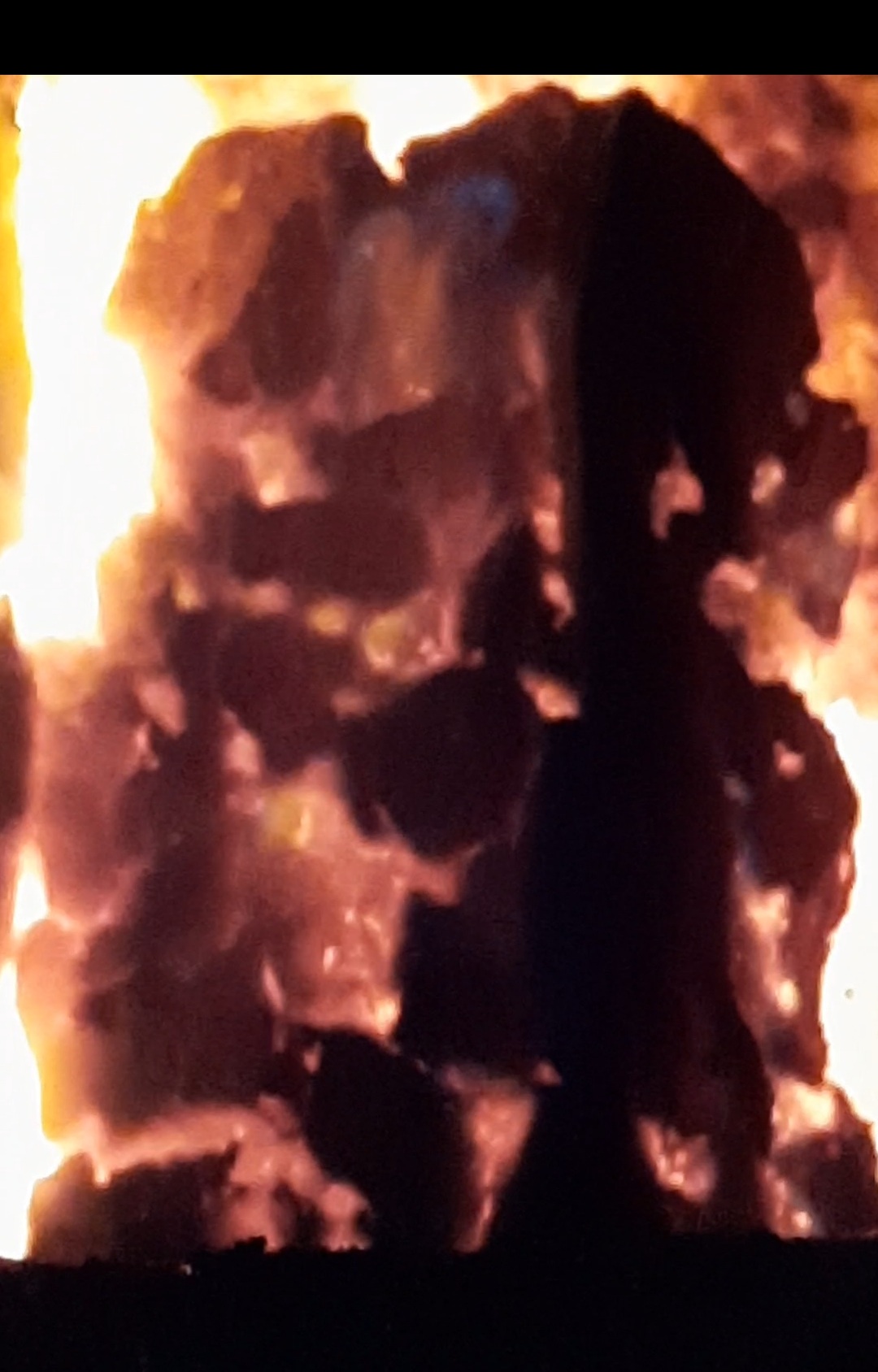
Is it the inside of an angry volcano? Is it the fiery depths of Mordoor where the ring to rule all rings was forged? Guess again.
It is in fact a fossil fuel burning in our solid fuel burning range. It's not coal or briquettes or wood either. It is a fossil fuel native to Ireland and another handfull of countries. It is turf or peat as some people call it.
What is turf?
We've been burning turf here in Ireland for many many years. Irish people in many areas of rural Ireland hace heated their homes and cooked their food using turf taken from from the bog as fuel. Turf was traditionally from the bog by hand, using a two-sided spade called a sleán, though over time many progressed to machine turf and hopper turf. Oftentimes someone in the community cuts the turf and sells plots to others who save their own turf.

Saving the turf involved turning each sod to ensure the sun and wind could help in the drying process. The turf was then placed upright or 'footed' into grogeens for further drying. Footing the turf is a back-breaking job and involved placing five or six sods of turf upright and leaning against each other. Finally, the turf was brought home and stored in sheds or reeks. Saving the turf relies on good weather, so it is not always easy to get a good return. Those who burn a turf fire love it and I must admit the smell of turf burning is something I like myself.
Such is our love of turf in Ireland, Barry Moore, brother of Christy or Luka Bloom as he is known wrote this song about it - it's called I'm a bogman and he sings it here with Christy.
Looking into a fire
Fires transfix me. Watching the flames dance as they lick the fiery fuel to stay alive and ablaze. We had an open fire in our sitting room growing up and on Sundays and Christmas time especially, I have fond memories of sitting with my Mum and Dad and brothers and sisters taking in the heat of the fire as it crackled and mesmerised the room. A feast for the senses, as the warmth touched the skin, the glow lit up the room, the crackle of burning hung in the air and I dare say you could even taste it with that distinctive smell - there's not many other things I can think of which can hit all the senses like a turf fuelled open fire.
Taming fire many moons ago
Our ancestors tamed fire for us many moons ago and this set us apart from other mammals at the time and paved the way for our future dominance. We need three things for fire - fuel, oxygen and heat or an ignition source that allows the fire to start.
Our evidence of fire on earth is based mainly on the occurrence of charcoal in ancient fossils. This is the partially combusted plant material left after a fire has been extinguished. The oldest fire recorded on Earth has been identified from charcoal in rocks formed during the late Silurian Period. That was around 420 million years ago.
I did some searching on line and found out that:
The first stage of human interaction with fire, perhaps as early as 1.5 million years ago in Africa, is likely to have been opportunistic. Fire may have simply been conserved by adding fuel, such as dung that is slow burning. A fire would have been useful not only for light and warmth at night, but to frighten off predatory animals, and the smoke would have been effective in keeping insects away. This ability to “stretch” fire was a novel feat, only developed by humans.
So much we can reasonably speculate. But finding evidence of the earliest regular use of fire is fraught with difficulty, as identifying ancient hearths is not always straightforward. Individual occurrences are also of limited use; there needs to be evidence from multiple sites. There are claims for such evidence from sites in southern Africa that are over a million years old, such as the Wonderwerk Cave in Northern Cape Province. Clear evidence of habitual use of fire, though, comes from caves in Israel dating back between 400,000 and 300,000 years ago, and include the repeated use of a single hearth in Qesem Cave, and indications of roasting meat.
The next stage was to gain the ability to start a fire. This would have enabled more regular and managed use, allowing the development of cooking, expanding our diet. According to British primatologist Richard Wrangham, cooking may have played a role in the expansion of our brains. The hearth would have probably formed a social focus, helping the development of language. The use of flints to start fire may have occurred as far back as 400,000 years ago, but concrete evidence only comes from as recently as 40,000 years ago. As the American archeologist Andrew Sorensen and his colleagues have put it, “we archaeologists have yet to ascertain, even in coarse chronological terms — when in our early prehistory fire became part of the human tool kit.” The British archeologist John Gowlett has described the discovery of fire by humans as a convoluted process that took place over a long period of time.
The third stage, in which humans began to use and control fire on a regular and widespread basis, may have started only 7,000 years ago. This may have included the use of fire for land clearance for agriculture and even for warfare. But even when humans were controlling fire to the extent that it could be used to modify agriculture, we should not lose sight of the fact that wildfire is predominantly controlled by climate.
So there you have it, fire has been around for a long long time and is not going away any time soon.
Thanks as always for stopping by
Peace Out
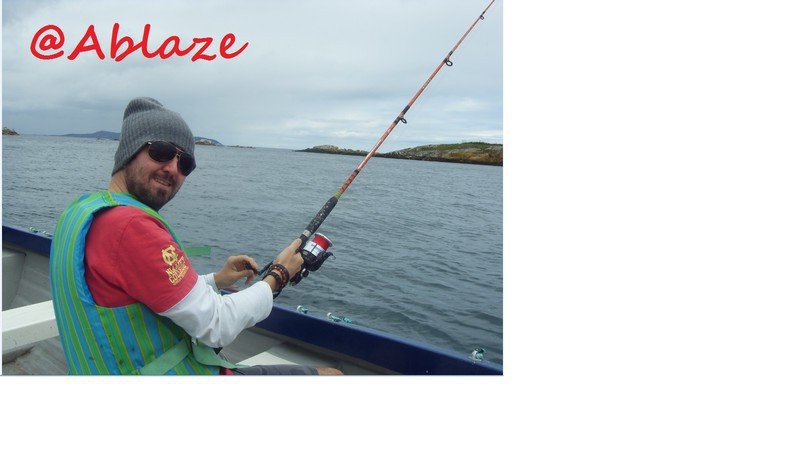.jpeg)
You can say you're on home turf!
:) Boom Boom....
What do you call a man in the bog?
..
.
.
.
.
..
.
.
.
.
.
.
..
.
..
.
Pete!
Ahh, I'm a bog of Allen girl I am. There is no better heat that what comes off of turf. I managed to have some with me when I went to Morocco in the truck, the locals there were fascinated by it . It's mighty stuff indeed xxxxx
No better woman! The turf fire is unreal isn't it! I've grown up with turf all my life and it's only since we came back to Galway that I can burn it again, as our house has a Stanley range and an open fire. Nothing like the smell, the heat, the nostalgia...